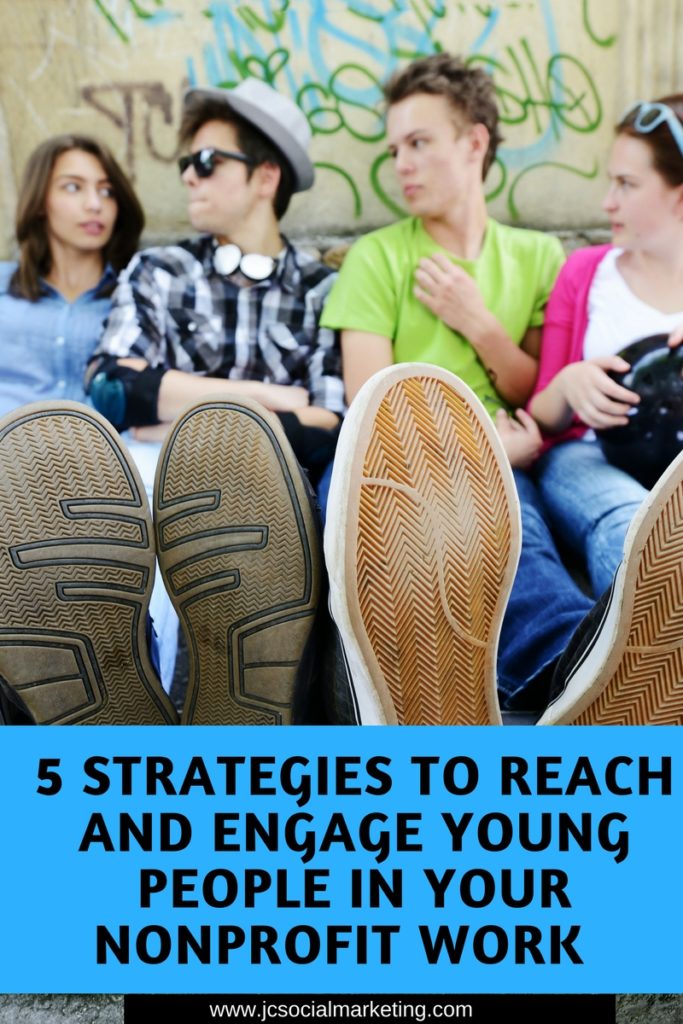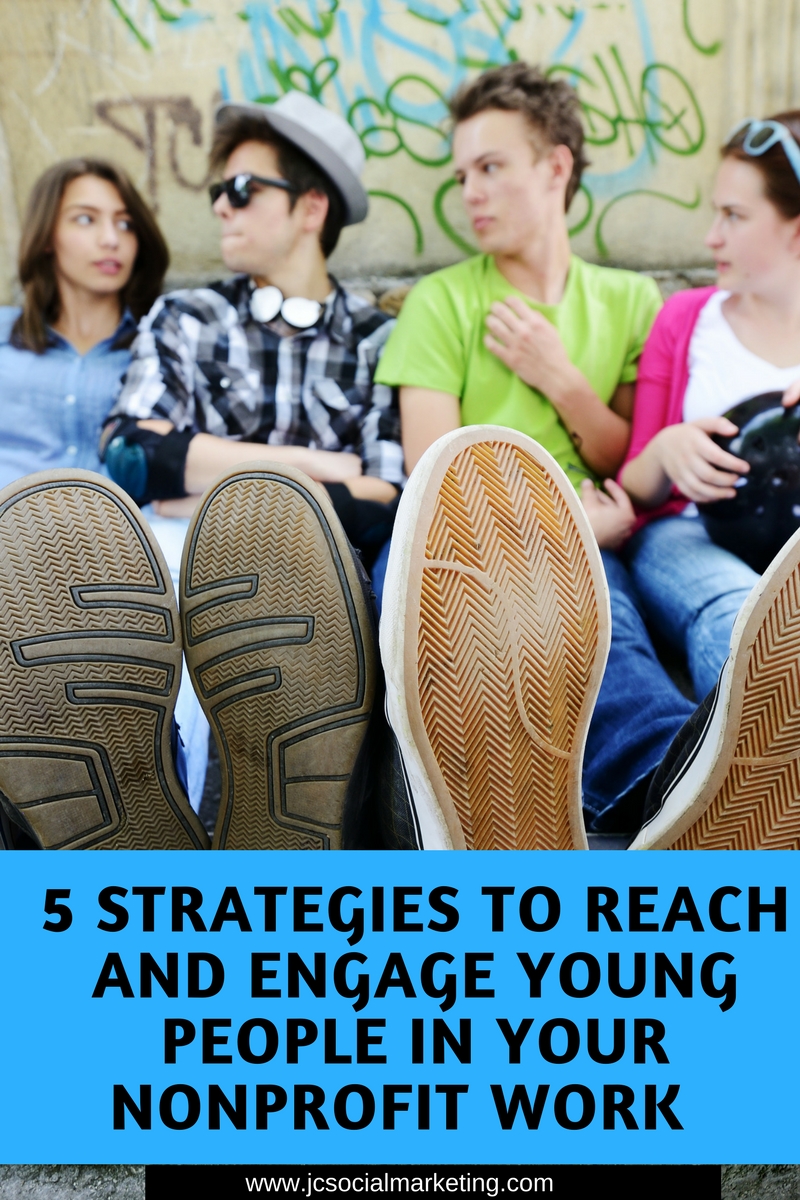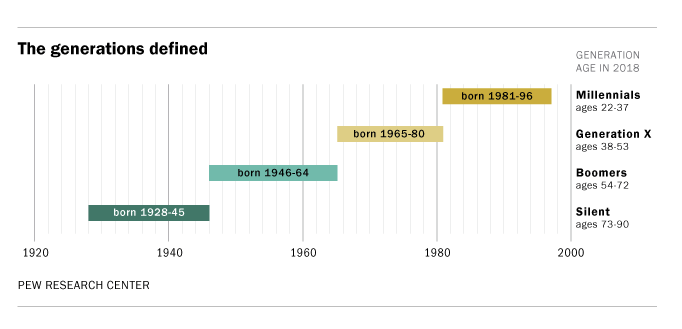 “How can our nonprofit get young people involved in our organization?”
“How can our nonprofit get young people involved in our organization?”
“Where do we need to be online to reach younger people?”
“Do young people still use Facebook?”
These are all frequent questions posed in my work with nonprofits large and small.
It seems that nonprofits large and small are focused on getting more young people involved in their organizations.
Certainly this is a great idea if nonprofits want to maintain relevance in a society that is increasingly distrustful of government and institutions.
It is also important for financial sustainability and for succession planning in terms of staff, volunteers, and Board members.
Because “getting young people involved” can mean many different things, this is a challenge that does not lend itself to a one-size-fits-all solution.
However, there are certain, strategic ways that you can use to get started reaching and engaging young people in the work of your nonprofit. Here are 5 strategies your nonprofit can use.
1) Laser focus on the age group that you want to target.
What do you mean when you say “young people”?
To truly create a strategy of “getting young people” involved in the work of your nonprofit, you need to first identify what you mean by “young” people.
When nonprofits talked about engaging “young people” they often mean Millennials. However, the oldest Millennials are turning 38 this year, many of them have careers, kids, mortgages… as well as a ton of student debt.
Here are generations as defined by Pew Internet:
- Post-Millennials include anyone born from 1997 onward;
- Millennials are anyone born between 1981 and 1996 (ages 22-37 in 2018) .
When you identify the age groups that you are targeting – for example, young professionals ages 25-30 – you can then better craft a specific strategy to reach them.
2) Research the places where this group of people spends time – online and off.
If you want to reach new moms aged 30-35, it’s a good bet that they are on Facebook, commiserating and seeking advice in Facebook groups.
If you want to reach high school and college kids, you better get on Snapchat, and learn about the dozens of other platforms used by this age group (ones you haven’t heard of).
If you want to reach young career-oriented professionals, set up shop on Instagram, or hold a casual, fun after-work cocktail party with appetizers.
Holding in-person, expensive events in the evenings that do not offer child care most likely won’t work for people with young kids.
Holding early-morning trainings and workshops won’t bode well for college-age kids and students, that prefer to sleep in.
In the recently released Social Media Use In 2018 report, Pew Internet found, that among 18-24 year olds:
- 94% use YouTube
- 78% use Snapchat, with 82% of these users visiting the platform daily
- 71% use Instagram, with 81% of these users visiting the platform daily
- 45% are Twitter users
Be thoughtful about the kinds of groups that you want to reach and be sure you set up a presence on the relevant social media channels.
3) Determine what you want them to do.
In order to create your nonprofit plan for identifying, reaching, and engaging younger people, you also need to know what it is that you want them to do. What does success look like?
If you succeeded in “involving younger people” in your organization this year, what would the end of the year look like? Be as specific as possible.
“Raising awareness” translates into getting young people to pay attention and become curious. What do you want to do with that raised awareness?
You cannot go from complete stranger to loyal donor. That is incredibly rare, and hard to scale and sustain.
Write down a list of ways that younger people can “get involved” without making a financial donation at first.
Getting them to sign a petition, send out a tweet, watch a video – those are all lighter touches that can then lead to a deeper relationship in time.
4) Focus on the issue rather than the organization.
Here are the two main types of content that you need to create and share, in order to engage supporters of all ages:
- Interesting, informational, educational, and valuable information around your cause;
- Authentic and emotional storytelling around the issue.
Of course, using humor, not taking yourself too seriously, and sharing entertaining content work well also, but these can be more challenging for nonprofits to master.
It’s vital that you understand the philanthropic and social change mindset of the age group you want to reach.
For example, 70% of Millennials claim that they do not need traditional nonprofits to feel that they have changed the world.
According to the Case Foundation’s Millennial Impact Report, more than 70% of millennials believed they could have an impact on issues they care about—without relying on traditional institutions.
This means this group is more loyal to causes than they are to specific organizations.
Personally I don’t think this is a unique characteristic of Millennials – I think the majority of donors and supporters care more about causes and issues than they do about the organization that is solving them.
Focus your storytelling on stories that showcase benefits not features – highlight the IMPACT of the work that you do, not the actual work itself.
5) Understand and leverage the strengths of each communications channel.
I write about this a lot, but it bears repeating – each digital marketing platform is completely unique and requires a separate and original content strategy to be successful.
Millennials and younger generations have zero tolerance for a social media strategy that looks thrown together and careless.
They will instantly bounce off of a website that is clunky, cluttered, or slow to load.
They will not fill out a long form that is not mobile-optimized or easy to read from a phone.
Posts that work Twitter or LinkedIn may not work on Instagram.
Don’t post Facebook links on Twitter. Don’t automate all of your social media accounts (some scheduled tweets are fine).
Use video, as it is the most engaging type of content across age groups and across social media platforms.
Facebook and Instagram both love live video streaming, as it receives 10 times the engagement of a regular posted video.
Breaking news and trending topics (hashtags) can be used to get more exposure on Twitter.
Eye-catching photos and graphics dominate Instagram.
Instagram Stories and Snapchat-type content, where photos and videos disappear in 24 hours, are widely used and consumed by post-millennials, college-age and high school kids.
Helpful articles on getting started with engaging Millennials, next gen, and other generations can be found on my Pinterest board: https://www.pinterest.com/juliagulia77/nextgen-millennials/
Want to learn more about how your nonprofit could use Instagram? Get the Ultimate Guide to Instagram for Small Nonprofits!

Get this free e-book and you will receive:
- Updated information on Instagram and the rising popularity of the visual social network;
- A step-by-step guide to setting up your nonprofit with free Instagram Business tools;
- A complete run-down and review of 10 specific ways to use Instagram to raise money and awareness for your cause - with real-world examples!
I provide you with all the tips and secrets that I use in my business and with my nonprofit clients, to get them results using Instagram! Sign up now to secure your spot!


Comments 3
I keep up with a number of blogs to keep me SHARP on my own efforts. I raise funds for our family to work with an organization, and they process the money for us, and our partners/donors get a receipt for tax deductions. But I don’t actually fundraise for an organization. — But keeping up with current trends and information helps tremendously. Thank you!
Author
Thank you for reading!
Pingback: The Most Powerful Tool For Your Toolbox: Non-Profits Using Social Media | MacEwan University Online Communications